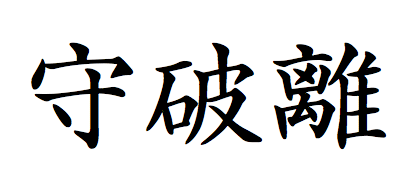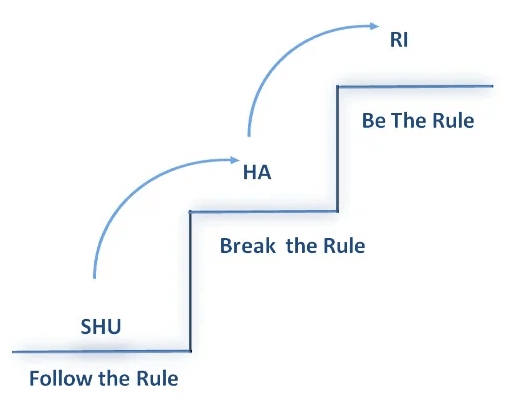Learning something new is challenging, especially if the field is completely new. One may approach learning in many ways, but the following method is very efficient. Enter Shu-Ha-Ri Kokoro.
Shu-Ha-Ri is an old Japanese concept commonly used for training Aikido martial arts novice students and leading them to mastery. Kokoro is a bonus concept for Shu-Ha-Ri, not so widely used, but essential from my point of view.
The best part is that this concept applies to anything learnable — software development, graphic design, painting, cooking, construction works, accounting, sports, etc. You are not limited only to martial arts.
Shu-Ha-Ri roughly translates as "follow the rules, break the rules, create the rules." Conversely, Kokoro means "back to simplicity/basics." Let's break these phases down:
Shu
This is a starting point. You do what more experienced people tell you to do. You must concentrate on repetition - doing the same thing the master does. Over time, you will accumulate the basic skills to step into the second phase.
Ha
This is a phase where your hard work and repetition start paying back the dividends. You should feel comfortable taking steps beyond the basics "to branch out." You begin experimenting with things. Though, you should remember to continue sharpening your skills.
Ri
This is your peak. You started with basics and experimented enough to begin creating your own stuff. Eventually, you become a master yourself.
Kokoro
You are an expert. You have seen it all. Now you understand that despite creating new rules, concentrating on core stuff is much more essential. You step back, go back to basics, and adore the simplicity for the rest of your days.
For example, I've never painted anything meaningful besides childish sketches in my school notebook. If I wanted to learn how to paint, I would:
- Head to YouTube/Udemy/Amazon and find the materials;
- Follow the material without asking many questions, doing and over-doing all the exercises;
- Focus on a process. I would dedicate X hours per week to the materials and practice;
- Set goals to do X exercises and Y extra/freestyle paintings per week;
- Paint, paint, and paint... until I feel comfortable experimenting with other styles and techniques;
- From then on, the following steps would already be triggered in my mind... now the sky would be the limit.
Happy learning!

